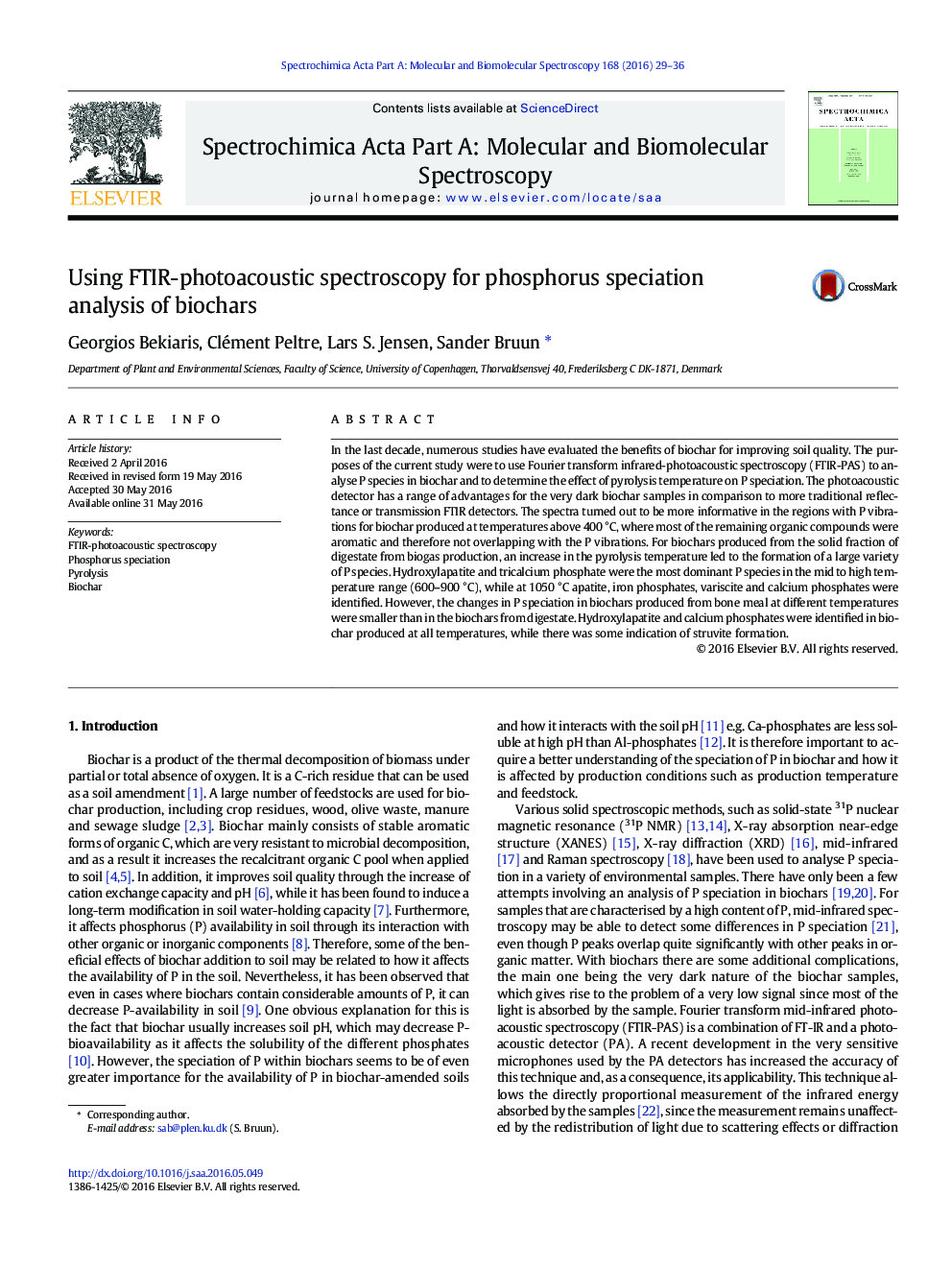| Article ID | Journal | Published Year | Pages | File Type |
|---|---|---|---|---|
| 1230404 | Spectrochimica Acta Part A: Molecular and Biomolecular Spectroscopy | 2016 | 8 Pages |
•FTIR photoacoustic spectroscopy was capable of identifying P species.•Pyrolysis temperature affected more the P speciation in digestate solids biochars.•Hydroxylapatite and calcium phosphates were the abundant species in bone meal biochars.
In the last decade, numerous studies have evaluated the benefits of biochar for improving soil quality. The purposes of the current study were to use Fourier transform infrared-photoacoustic spectroscopy (FTIR-PAS) to analyse P species in biochar and to determine the effect of pyrolysis temperature on P speciation. The photoacoustic detector has a range of advantages for the very dark biochar samples in comparison to more traditional reflectance or transmission FTIR detectors. The spectra turned out to be more informative in the regions with P vibrations for biochar produced at temperatures above 400 °C, where most of the remaining organic compounds were aromatic and therefore not overlapping with the P vibrations. For biochars produced from the solid fraction of digestate from biogas production, an increase in the pyrolysis temperature led to the formation of a large variety of P species. Hydroxylapatite and tricalcium phosphate were the most dominant P species in the mid to high temperature range (600–900 °C), while at 1050 °C apatite, iron phosphates, variscite and calcium phosphates were identified. However, the changes in P speciation in biochars produced from bone meal at different temperatures were smaller than in the biochars from digestate. Hydroxylapatite and calcium phosphates were identified in biochar produced at all temperatures, while there was some indication of struvite formation.
Graphical abstractFigure optionsDownload full-size imageDownload as PowerPoint slide
